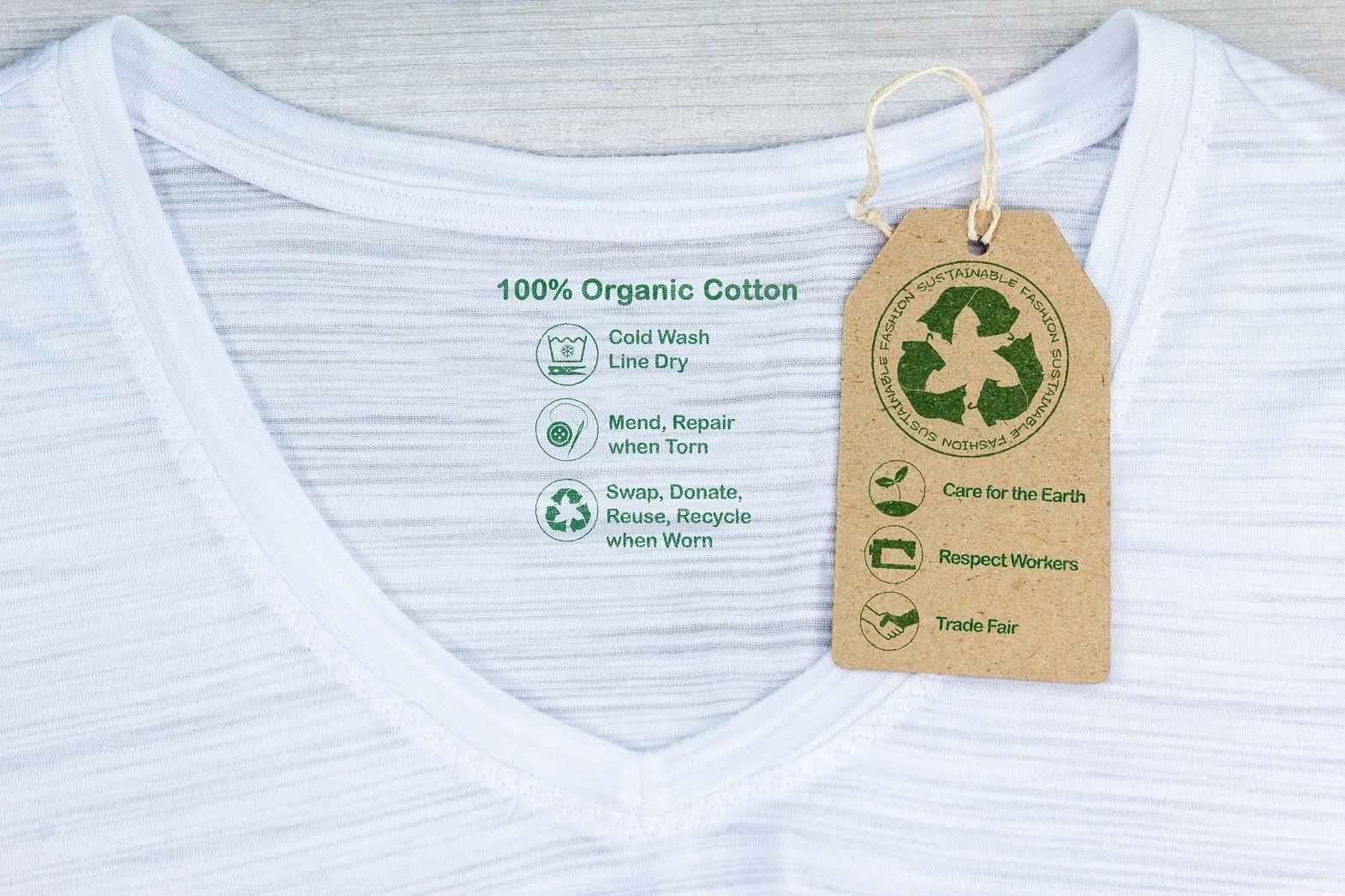Fast fashion, while fuelling self-expression for individuals and economic growth for businesses, casts a long shadow on the environment. The global apparel industry is the second most polluting industry in the world, responsible for 8 to 10 per cent of total carbon emissions1, with that figure projected to reach 26 per cent by 2050 if industry practices are left unchecked. Solutions are needed as fast as the fashion itself. Thankfully, a wave of creativity and technological advancement is sweeping through the fashion world, bringing innovative solutions to decarbonise the apparel supply chain, from fibre production to the clothing hanging in every closet.
Sustainable Fibres: Cultivating a Greener Wardrobe
The very foundation of clothing – the fibres themselves – offer exciting eco-conscious alternatives. Traditionally, the fashion industry, driven by the demands of fast fashion, has prioritised fabrics such as cotton and leather, solely based on their profitability, disregarding the detrimental environmental consequences associated with their production processes. These materials are often sourced from unsustainable farming practices and utilise chemically intensive processes such as dyeing and bleaching which disrupt the ecosystem.
Organic fibres, such as organic cotton, eliminate the need for chemical processes, harmful pesticides and synthetic fertilisers, significantly reducing the carbon footprint compared to conventional cotton. Recycled polyester, crafted from plastic waste like discarded bottles, also helps breathe new life into existing materials while keeping plastic out of landfills.
Beyond new-age fabric options, innovative fibre production technologies are pushing the boundaries of sustainability. Closed-loop recycling systems allow manufacturers to transform used clothing back into high-quality fibres, minimising waste and resource depletion. For example, Closed Loop Partners – an investment firm at the forefront of building the circular economy – has already saved 300,000 gallons of water, averted 19,000 pounds of carbon dioxide, and averted 73,000 pounds of waste2 through its closed-loop recycling initiatives.
Powering Progress: Energy-Efficient Production
The transformation does not stop at the fibre stage. Apparel factories are increasingly adopting energy-efficient manufacturing techniques and technologies. Consider Patagonia, a leading outdoor apparel brand, which has significantly reduced its carbon footprint by investing in energy-efficient machinery and utilising renewable energy sources like solar power in its factories.
Nike has committed to using 100 per cent renewable energy in its company-owned or operated facilities by 2025. While this may sound ambitious on the face of it, Nike has quietly just been doing it for years as 96 per cent of its operations3 already used renewable energy in 2023. The brand also has a goal of reducing greenhouse gas emissions by 70 per cent over the next couple of years.
Such progress is being made possible through process optimisation strategies that help streamline production lines and minimise energy consumption at every step. This includes techniques like reducing water usage in dyeing and finishing processes, and optimising fabric cutting patterns to minimise waste.
Streamlining the Journey: Sustainable Supply Chain Practices
The journey from fibre to finished garment often involves extensive transportation and logistics. Here too, innovations are minimising the industry’s environmental impact. Green transportation initiatives, such as utilising fuel-efficient vehicles and exploring alternative options like electric or hybrid trucks, are reducing emissions associated with freight movement.
Inventory management is another process undergoing a green shift. By distributing stocks in strategic points of sales regions, transport methods involved in the process are reduced when compared to fulfilment from one central facility. By decreasing the distance between the warehouse and the delivery address, retailers can reduce their carbon footprint while gaining a competitive advantage in terms of delivery times as well. Consolidating shipments and optimising delivery routes on top of this will further minimise wasted transportation miles.
Sustainable packaging solutions are also gaining traction as an attractive solution. Replacing traditional plastic with recycled or biodegradable materials ensures that the environmental impact does not extend beyond the garment itself, at worst. Zara is among the prominent fashion companies that have started producing recyclable packaging. Along with providing sustainable packaging, Zara is letting customers bring their unwanted items back to stores to be recycled. The company aims to be 100 per cent landfill free by 20254.
Offsetting the Footprint: Carbon Emission Reduction Initiatives
Even with the best efforts, eliminating all carbon emissions entirely is a challenge. Here, carbon offsetting programmes come into play. Carbon offsets work on the theory that if a tonne of carbon is emitted into the atmosphere somewhere in the world, purchasing offsets for a tonne of carbon would mean that it is being absorbed, in equal measure, somewhere else. Offsets, thus, promise to help polluters cancel out emissions.
Patagonia has achieved this by investing in reforestation projects that absorb carbon dioxide from the atmosphere.
Other initiatives focus on directly reducing emissions within the supply chain. H&M, a global fashion retailer, has partnered with factories to invest in renewable energy sources like solar panels, reducing their reliance on fossil fuels. Additionally, community-based sustainability projects that promote energy-efficient practices within local communities where production takes place offer a holistic approach to reducing the carbon footprint.
Collaboration is Key: Building a Sustainable Future Together
The fashion industry’s transition to sustainability requires a concerted effort. Collaborative initiatives involving brands, manufacturers, NGOs, and policymakers are accelerating progress. The Global Fashion Agenda, for instance, brings together stakeholders from across the industry to develop and implement sustainable practices. Industry-wide sustainability standards, such as the Global Organic Textile Standard (GOTS), ensure that products meet environmentally and socially responsible criteria. Partnerships between brands and suppliers are fostering better communication and innovation throughout the supply chain.
Looking Ahead: Emerging Technologies and Challenges
The future of sustainable apparel manufacturing holds promise. Innovations like biomimicry, where materials and processes are inspired by nature, are leading to the development of entirely new types of sustainable fabrics. Additionally, blockchain technology offers the potential for increased transparency in supply chains, ensuring that sustainability practices are followed throughout the production process.
However, challenges remain. Cost considerations can make some sustainable practices less accessible to smaller brands. Scaling up innovative technologies to meet industry-wide demand is another hurdle. Regulatory frameworks and infrastructure development also play a crucial role in enabling a sustainable transition.
Conclusion: A Fashionable Future for the Planet
The innovations sweeping through the apparel industry paint a hopeful picture. Sustainable fibre production, energy-efficient manufacturing, optimised supply chains, and carbon offsetting initiatives are paving the way for a future where fashion and environmental consciousness go hand in hand. By fostering continued collaboration, investing in sustainable solutions, and overcoming remaining challenges, the fashion industry can truly become a force for good, leaving a legacy of style without sacrificing the planet. This transformation requires action not just from industry leaders, but from consumers as well. By making informed choices and supporting brands committed to sustainability, consumers can collectively move the needle towards a more eco-friendly future of fashion. The power to choose what to wear extends beyond personal expression; it is a chance to vote for the kind of world present and future generations will be living in.









Comments